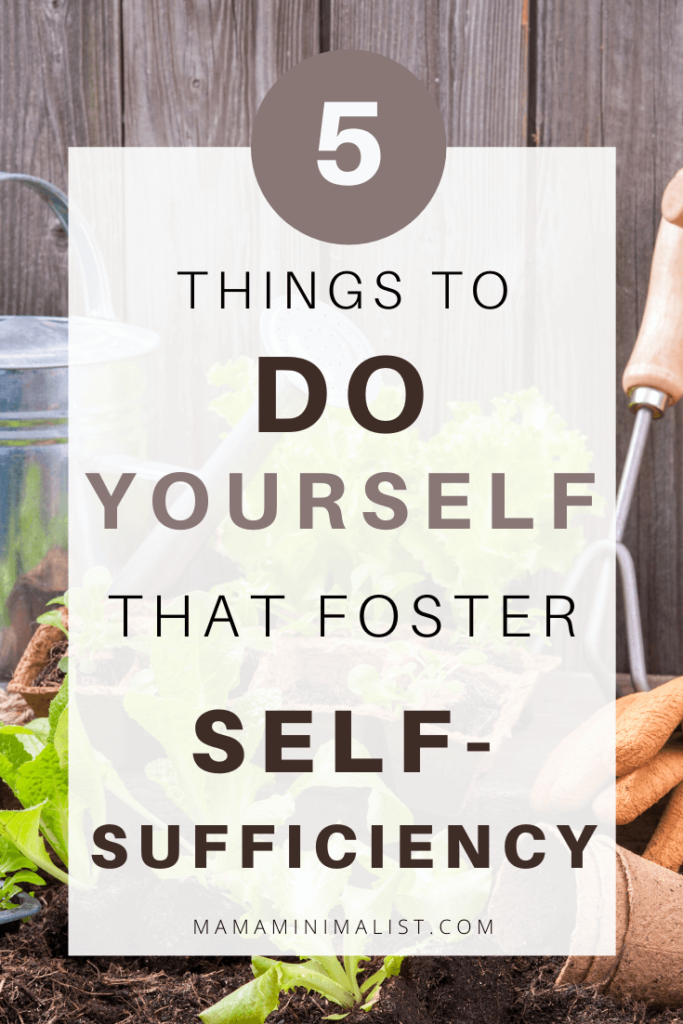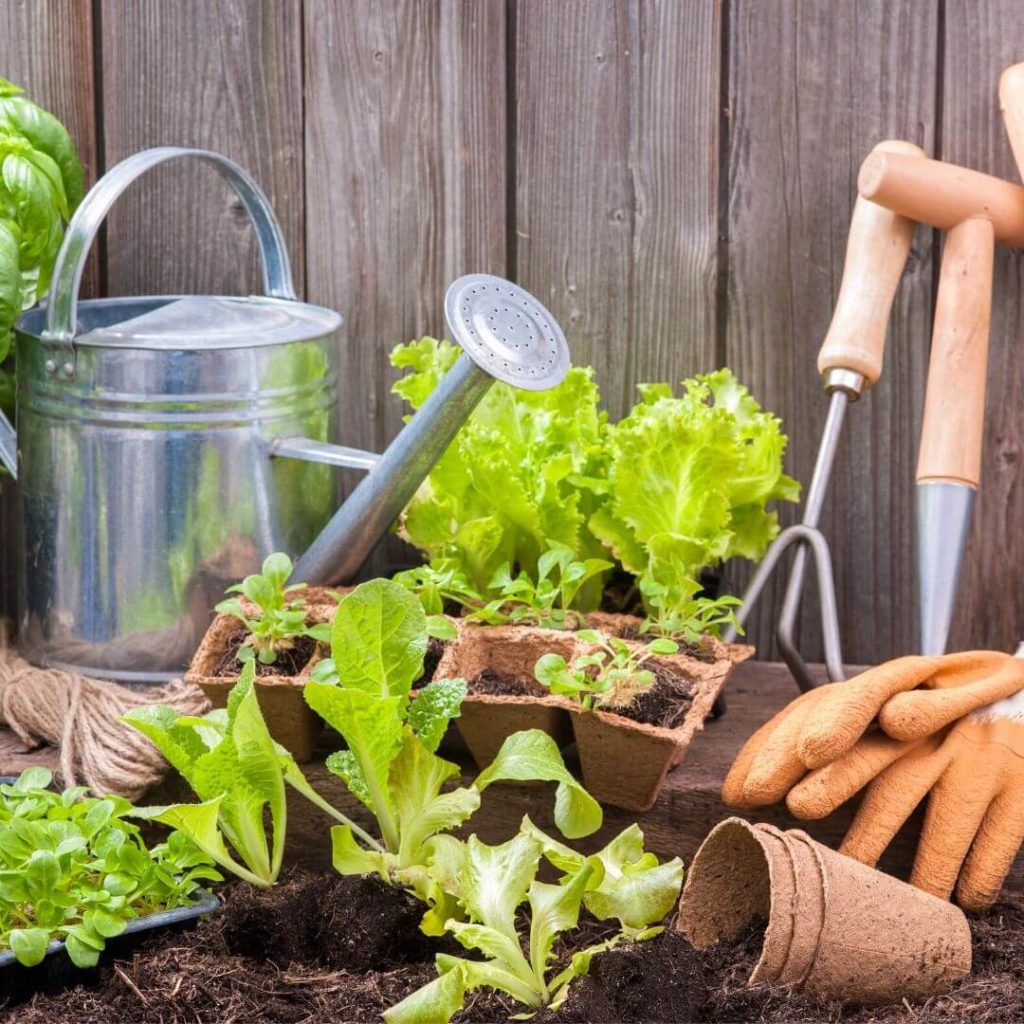5 Things to Do For Yourself
5 Things to Do Yourself
Identifying things to do yourself saves money and increases self-sufficiency.
In normal circumstances – when we aren’t in the midst of a pandemic – public opinion tends to shun frugality. No one wants to be known as a tightwad; God forbid you’re considered cheap.
But frugality has been reborn, so to speak, thanks the novel Coronavirus pandemic:
Many of us are wasting less food. We are also experimenting with growing our own food, perhaps for the first time.
Many are becoming more mindful of waste production, too, and are making conscious efforts to save more. Consumers are washing out Ziplock bags and reusing aluminum foil while smiling.
Thrifty behaviors aren’t for side eyes anymore. Instead, the opposite is true: being frugal is smart, at least during a pandemic.
Thriftiness is about using resources wisely and reducing waste as a consequence. What else can we be doing at home to save money? Which frugal habits can we continue long after the pandemic is over to increase self-sufficiency?
Why is it important to do things yourself?
1. Less debt
Nearly half of Americans are unable to pay off their monthly credit card balance.
The average American carries $6929 worth of debt every month, or over $420 billion collectively.
But when you do things yourself, you save money because you no longer have pay someone to do them for you.
2, Less environmental impact
Although capitalism promotes infinite consumption, our planet does not have infinite resources.
Manufacturing “stuff” exploits Earth’s precious and nonrenewable resources including water, oil, and coal.
And then there’s the not-so-pretty reality of where it all goes: our discarded possessions ultimately head to landfills where they release greenhouse gases during breakdown and decomposition.
3. Increased self-sufficiency
Coronavirus made us panic, and that’s because many consumers realized they are heavily reliant on corporations to provide essentials for survival.
What would we do if the conveniences we rely on like grocery stores and gas stations suddenly ceased to exist?
How long we can reasonably keep our families fed, clothed, and warm if supermarkets were looted, gas stations were shuttered, and electricity was shut off?
The modern definition of self-sufficiency implies that it is somehow tied to finding gainful employment.
I argue, however, that truly becoming self-sufficient occurs when one learns useful skills for living, because self-sufficiency is best defined as the ability to care for daily needs with minimal help.
Did you know?
You can find The Sustainable Minimalists podcast wherever you listen to podcasts.
Apple Podcasts | Google Podcasts | Spotify | Stitcher
3 types of frugality
1. Intrinsic frugality
For some people, frugality is an internal trait.
Consumers who practice internal frugality do so because they believe spending less is the right thing to do.
Research finds that consumers who are intrinsically frugal often have greater self-discipline and greater self-control than the rest of the population. They are frugal – even though it isn’t cool – because they keep in mind the bigger picture, the greater good.
2. Extrinsic frugality
Some consumers are frugal because there is simply not enough money to pay for all whims and wants. They must be frugal by consequence.
Consumers who exhibit external frugality would perhaps like to over-consume, but can’t.
3. Novel frugality
Thanks to Covid-19, there has been a shift away from waste culture. Indeed, novel frugality occurs when the particular moment warrants a fear response from consumers.
Novel frugality is defined by the desire to preserve safety amidst uncertainty.
Saving stuff, reusing stuff, and reducing food waste are all means by which we can stay out of harm’s way by not going to stores. They are means of gaining control despite having a legitimate fear of scarcity, too.
Do Yourself Action Item #1: Clip Coupons
Couponing is free money back in your pocket and all it costs is a few minutes of upfront work.
One of the major benefits of couponing is that you can apply a discount on top of a sale.
Clipping coupons is a pre-Y2K practice, as smart phone apps make couponing easier than ever. To start, check out couponing websites like The Krazy Coupon Lady which will help you find deals on the products you already buy.
#2. Perform Simple Home Repairs
Painting walls. Ripping out carpet. Completing demo work. Landscaping. These are all examples of simple home repairs that don’t require technical skill.
Go ahead and DIY the jobs that you can easily handle yourself. Even if you mess the job up completely, the worst that could happen is you have to hire someone to do it over.
For home repairs that require skill – electrical and plumbing, for instance – stick to the professionals so as not to create a bigger (and more expensive) problem.
#3. Embrace Easy Auto Repairs
Conducting easy auto repairs are things you can do yourself that both foster self-sufficiency and save money. Examples of such auto repairs include:
– replacing your car’s air filter every 12 months
– changing your oil and oil filter every 5,000 miles
– changing your windshield wipers
#4. Avoid Wasting Food
Wasted food is wasted money.
If you find yourself wasting more food than you’d prefer, perhaps now is the time you consciously waste less.
Tried-and-true strategies that tackle food waste include the following:
– Meal plan. [Find everything you need to plan a week’s worth of low-waste meals here.]
– Keep track of what is in your fridge and pantry and freezer by labeling it with its name and date, then push new food to the back and bring old food to the front.
Take this a step further and really spell it out for your family members by creating an Eat-Me Box for items nearing expiration.
– Use airtight lids on everything.
– Get into the habit of poking around your refrigerator, freezer, and pantry every week. Move stuff around. Shake the milk carton. Get intimate with what you have so it doesn’t get lost and go to waste.
#5. Cut your own hair
4 years ago, I bought a $30 buzzer, watched a few Youtube videos on how to do a half-way decent fade, and started cutting my husband’s hair. By my estimate, this simple practice has saves us $250 per year.
I have also started cutting my daughters’ hair, too. Are their haircuts perfect? Nope, but they are good enough.
Related to home haircuts is all the other personal care services we regularly pay for, including hair dying, nail painting, and more. These are all examples of things to do yourself at home for increased money savings and self-sufficiency.
What things do you do yourself that save money and foster self-sufficiency? Leave a comment below for the rest of us!





2 thoughts on “5 Things to Do For Yourself”
You make some really good points throughout this post, thanks for sharing! We particularly liked the angle you took with COVID-19 forcing us to be more self-sufficient and conscious about food waste and other purchases. We also hope that people use this time to reflect on what they can start doing for themselves so that their daily needs are met. Well said!
Thank you for taking the time to leave a comment! Very happy you enjoyed the post.
Comments are closed.